Our mission is to help save dogs' and cats’ lives through our educational content. To support our efforts, this page may contain affiliate links. We earn a commission for qualifying purchases – at no cost to you.
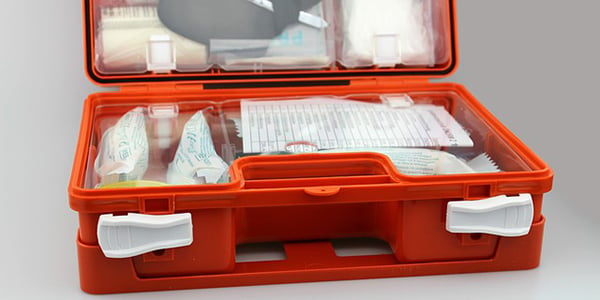
Being prepared with the right supplies in case your dog or cat is injured, poisoned, or experiencing any other type of emergency can have a huge impact on the overall outcome.
We will take you through what to include in your pet's first-aid kit and will also provide guidance on when and how to use it, as well as when not to use something.
Depending on your pet's breed and medical history, you may need additional items than those on this list. Please check with your veterinarian to ensure that your pet's individual first-aid kit is as complete as possible.
Each item on this list has been vetted to ensure that you're getting the right products and brands that will be most effective, practical, and safe for your dog or cat.
Unless otherwise noted, the products are meant for use with both dogs and cats. Most of the items included are also useful for human first-aid kits.
Putting together a smaller, "travel" first-aid kit: This icon 🚗 is included next to items that are recommended for a smaller version of the first-aid kit for your car, and/or to take when hiking, camping, or traveling.
If you prefer, you can purchase a pre-made travel first-aid kit for pets like this one, but we would still recommend supplementing it with other necessary items from our list below.
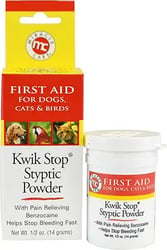
Use: To quickly and effectively stop bleeding from gashes, bites, and even "quicked" or torn toenails. Not only will this help to keep your car from getting blood-stained on the way to the vet, but it'll also help keep your first-aid bandages from becoming blood-soaked.
🚗 Travel First-Aid Kit: Include a bottle
 A bottle of saline wound flush
A bottle of saline wound flushUse: For cleaning (irrigating) wounds. Learn how to care for your pet's wound to help them heal properly. This product is also good for human-use.
Alternatives: A bottle of saline eye/contact lens flush or saline nasal spray can also be used for flushing a wound. See the Medications section below for a more detailed description and brand recommendation.
You can also ask your vet to sell you a small bottle of either a chlorhexidine diacetate or povidone iodine solution to have on hand for cleaning and disinfecting wounds. You'll learn more about these items next on the list.
Caution: Do NOT use Hydrogen Peroxide to clean a wound, as it can actually slow healing.
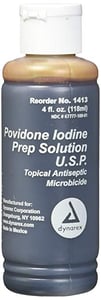
Use: You should have a bottle of Chlorhexidine diacetate* and/or Povidone iodine** around your home with pets.
You can get the Povidone iodine on Amazon, but should probably ask your vet for the bottle of Chlorhexidine diacetate solution (see * below for the reasons why).
To use either of these antiseptic solutions, either use some soaked gauze sponges to gently blot the area, or if you've got a syringe in your pet's first-aid kit, you can also use that to spray the diluted solution onto the area under a bit of pressure (which can further help to dislodge any bacteria or debris that was missed in the previous "wound flushing" step).
Cautions for both products: You don't want to use either of these at "full strength" though, they both need to be diluted*** for safest use. Chlorhexidine diacetate should be diluted to a 0.05% solution, while the povidine iodine should be diluted to a 1% solution for safe and effective cleaning and disinfecting.
*Caution about Chlorhexidine: Chlorhexidine is available as both a "scrub" and a "solution," when using it as an antiseptic for your pet's wounds you want to be sure to use the "solution," not the scrub.
Chlorhexidine is also available as both the "diacetate" salt and the "gluconate" salt, again, when using it as an antiseptic for your pet's wound care, use the "diacetate" salt and be sure to dilute to no more than a 0.05% solution.
Concentrations of Chlorhexidine diacetate over 0.05% will, like hydrogen peroxide, damage skin cells. So it's best to get the Chlorhexidine diacetate solution from your vet to avoid confusion or getting the wrong product.
**Caution about Povidone iodine: Dilute to a 1% solution. Also note that some people can be allergic to povidone-iodine.
***Not sure how to do dilutions? Here's an easy-to-use dilution calculator to help you get it right.
And, for safety sake when diluting, always add the chlorhexidine or iodine to the water, and not the other way around. Just in case of splash back, which can injure your eyes!
🚗 Travel First-Aid Kit: Include a bottle
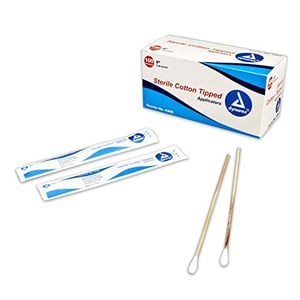
Use: For cleaning wounds, as well as for gently and more precisely cleaning in and around your pet's eyes, ears, and other sensitive areas.
We prefer these sturdier and conveniently packaged swabs from Dynarex.
Caution: Never stick Q-tips or other cotton-tipped swabs into your animal's eyes or ears without first being shown how to do it safely by your veterinarian.
If done incorrectly, you can cause serious damage to your cat's eyes or eardrums!
🚗 Travel First-Aid Kit: Include a handful
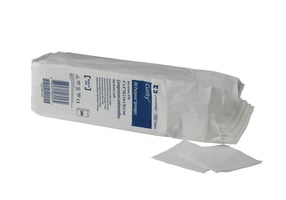
Use: Gauze sponges are useful both for cleaning wounds and also as the primary layer in a bandage where you don't need to worry about (or might actually want, like in a "wet-to-dry" bandage) the first covering sticking to the skin and wound below.
These are not non-stick (unlike the "non-stick" pads next on the list).
🚗 Travel First-Aid Kit: Include 5–10 pads
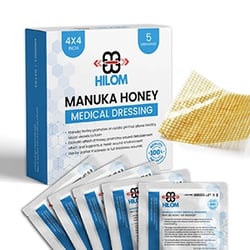
Use: Honey has been used for healing since ancient times. Manuka honey has broad-spectrum antimicrobial activity and has been shown to be effective against bacterial and fungal isolates.
There are no known resistant pathogens — which can be beneficial for wounds with drug-resistant bacterial infections. The honey helps keep the wound moist and prevent it from becoming dehydrated. It also helps draw oxygen and nutrients to the wound from the surrounding deep tissue.
Using premade honey-infused pads saves some space and time as you don't need to keep honey handy. These pads make for less mess as you are not trying to pour honey on the wound and then cover it.
After using them to dress the wound, they still need to be covered with a nonabsorbent gauze pad and then bandaged.
Regardless of whether you are using a honey-infused pad or pouring a thin layer of honey on the wound, you must flush the wound first to be sure it is clean, then be sure the area is mostly dry.
Then, place the infused gauze pad or drizzle honey over the whole area, cover with a thick layer of non-absorbent gauze pads, and then bandage with vet wrap and use tape to prevent it from sliding.
You must also use caution that dogs do not try to eat them or any type of honey bandage.
You can likely find Manuka honey at your grocery store (I've found mine at Trader Joe's).
🚗 Travel First-Aid Kit: Include 3 pads

Use: Non-stick bandage pads are good to put as your first layer when covering and bandaging burns, cuts, and other wounds.
While their gauze nature allows them to absorb blood and inflammatory fluid, their non-stick covering prevents them from sticking to and disrupting any clot or scab that has formed during the beginning of the healing process.
🚗 Travel First-Aid Kit: Include 3 pads
These come in 3" and 4" size bandages. For cats and small dogs you'll want to use the 3" size.
Use: This forms the "bulking" layer in bandages where bulking is necessary or desired. The best size/width of the rolls will depend on the size of your pet and where on their body you'll be putting the bandage.
Take Note: You don't want to make the bandage too tight, and having a roll that's too narrow for the place and purpose can result in the bandage being too tight.
Alternatives: A diaper or sanitary pad can serve the same purpose as the "cotton roll" in a bind. You'd just cover it with layers of "gauze roll" (see next item in this list) to secure it in place, just as you would a proper cotton "undercast" padding roll.
3" width cotton undercasting includes 12 rolls
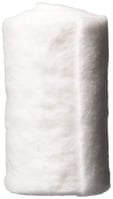
4" width cotton undercasting includes 12 rolls
🚗 Travel First-Aid Kit: Put 1–2 rolls in your kit depending on your pet's size.
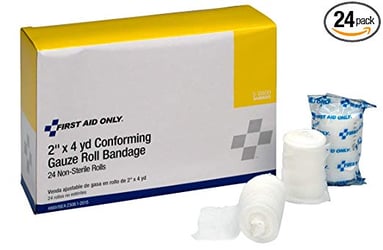 Gauze rolls (individually packaged)
Gauze rolls (individually packaged)Use: Gauze roll is used either as a stand-alone dressing, when bulking or a more specific primary layer are not necessary, or to cover and secure a specific primary or bulking layer (like "cotton roll" above).
2" wide gauze rolls work best for cats and smaller dogs and these 4" gauze rolls are better for larger dogs
🚗 Travel First-Aid Kit: Put 1–2 rolls in your kit depending on your cat's size.
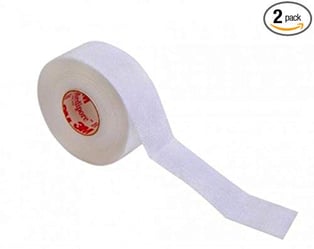
Use: To hold the different layers of a bandage in place while applying the subsequent bandage layers.
Also used for "stirrups" when applying bandages to paws, tails, and other difficult-to-bandage places. Check out this article to see how to apply a bandage, including stirrups, to a dog's leg.
We like the 3M Medipore bandage tape.
Use: To cut and remove bandages safely. The extended, "leading blade" makes it easier to get the scissor under the bandage, while the blunted nature of the tip decreases the chances of cutting your cat's skin while you're doing so.
🚗 Travel First-Aid Kit: Include a pair of scissors
Needed to cut splint rolls (next on list)
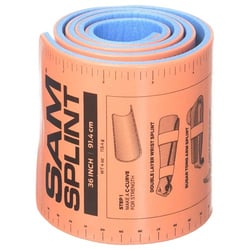
Use: Splints are great to have if you need to minimize movement in your animal's injured leg (like if they've broken a bone in their lower leg, or torn their cruciate ligament) while you transport them to the vet.
These foam-covered, moldable, aluminum splint rolls are perfect for pet first-aid kits!
Note: You'll need to have a pair of sturdy scissors, like the trauma shears above, to easily cut and tailor these rolled splints.Alternatives: In a pinch, you can use a sturdy stick, branch, or a wooden dowel.
🚗 Travel First-Aid Kit: Include 1 roll
Use: This is the outer layer for bandages to help keep your bandage in place and prevent it from unravelling. Because it sticks to itself, no tape is needed. You must be very careful not to put this layer on too tight, or else you'll interfere with the blood flow to the area under and around the bandage.
To prevent applying it too tight, unwrap the amount you need from the roll and then loosely wrap it back around the roll before applying it.
Alternatives: Duct tape, electrical tape, or Saran Wrap (or another plastic "cling film") can serve the same purpose in a bind.
If you need a latex-free option, try latex-free Coban.
Please Note: Do not apply too tightly.
Check out this video from our friends at the Penn Vet Working Dog Center to see how to apply a bandage (with stirrups) to a dog's leg.

Use: Can be used to induce vomiting in certain situations — never induce vomiting without first speaking with a veterinarian or animal poison control.
If you ever need to deskunk your pet hydrogen peroxide is an ingredient in this great pet deskunking recipe.
Cautions: (1) Make sure your hydrogen peroxide is 3% and NOT 35% or even 6%. Even "food grade" does NOT necessarily = safe!
See Illinois Poison Center's important article/warning about the dangers of the "food grade" peroxide craze.
(2) Do not use Hydrogen Peroxide to clean or disinfect wounds, as it can actually slow healing. Use a saline wound flush as recommended in the Wound Care & Bandages section above.
Use: Can help in certain poisonings and toxicities, and in certain situations.
Do not administer if the poison was ingested more than 2 hours prior — it is meant for acute poisoning. Once administered, it is important your pet gets plenty of fluids as it can cause dehydration and electrolyte imbalances.
BIG TIME CAUTIONS: Never administer activated charcoal without first checking with a veterinarian or animal poison control.
Not all poisons are adsorbed by activated charcoal, so it is not always necessary or appropriate to use.
Therefore, even if you suspect your pet has been poisoned and you give the activated charcoal, you MUST SEEK IMMEDIATE vet care - if not the charcoal can cause other issues.
Dogs or cats, with pre-exiting Hypernatremia, should never receive this as treatment.
And never, never attempt to administer activated charcoal to a pet that is vomiting, having seizures, is unconscious, or otherwise mentally altered (due to the risk of the charcoal getting in their lungs).
The timing of use is critical too. If too much time has passed and most of the toxin is already absorbed into the bloodstream it isn't effective.
Ethanol and xylitol are too small to bind to activated charcoal and should not be used.
Activated charcoal can be helpful if trying to treat a cat who has come into contact with lilies, but only after they are made to vomit.
It can be helpful when used to treat Tylenol, Digoxin, chocolate, and possibly antifreeze poisoning.
Head to this article for more information on using activated charcoal in the event your animal is poisoned.
Recommended activated charcoal products:
 Fetch A Vet Activated Charcoal Gel
Fetch A Vet Activated Charcoal Gel
VetDtox 1qt Activated Charcoal Powder
Activated carbon is very similar to and does the same job as activated charcoal but is more pure and better quality.
We like Dr. Cuddle's ReadyRescue product because it's easy to administer, was created by a veterinarian, and is safe for false alarms. One thing to note though, because you can only buy it in bulk (regardless of on Amazon or on their website) it is more expensive than getting a single product of activated charcoal.
It's best to get them in individual use packs, like these triple antibiotic ointment packs, so there is less chance of contamination after use.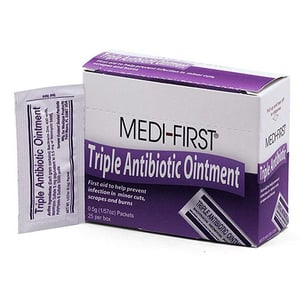
Use: For protection against bacterial infections on minor cuts, scrapes, and other injuries on your cat's skin. Apply to such wounds prior to placement of any bandages.
🚗 Travel First-Aid Kit: Include a few packs
Caution: This product should not be ingested, as its active ingredient, Polymyxin B, can cause anaphylaxis in cats.
Do not allow your cat to lick their wound site. If that is not an option, do not use.
Do not use beyond a couple of treatments without consulting with your veterinarian. Discontinue immediately if you notice any irritation to the skin.
Cats with known sensitivities may want to use Vetericyn Plus instead. If there are any concerns, please consult your veterinarian first.
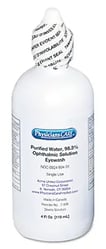 Use: To flush your pet's eye(s) in the event of pollen, grass seed (foxtail), or other object getting stuck in their eye ("ocular foreign body").
Use: To flush your pet's eye(s) in the event of pollen, grass seed (foxtail), or other object getting stuck in their eye ("ocular foreign body").
See note below re: treating with artificial tears after flushing. Can also play "double duty" for cleaning wounds if you don't have a bottle of wound flush handy.
🚗 Travel First-Aid Kit: Include as both an eye flush and wound wash. This eye flush is appropriate for pets and for humans and also comes in a 4 oz. travel size.
Watch this video to learn how to flush your pet's eyes the right way:
We like the Systane Ultra lubricating eye drops, which are also good for human use.
If you already use lubricating eye drops and want to use or purchase the same brand for your pet, just make sure it is preservative free and it doesn’t contain steroids, antibiotics, Tetrahydozoline hydrochloride, or any other ingredients.
Use: To restore lubrication to your pet's eye(s) and prevent discomfort or irritation after you've flushed their eye(s) out with a saline eye flush (see above).
Benadryl tablets or generic 25mg diphenhydramine tablets are good for most humans and many, but not all, pets.
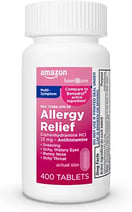 Use: Diphenhydramine can be useful in bee and wasp stings and other allergic reactions.
Use: Diphenhydramine can be useful in bee and wasp stings and other allergic reactions.
While diphenhydramine is safe for most pets in these situations, you should check with your veterinarian to ensure that your pet can be given diphenhydramine.
Learn more about using Benadryl/diphenhydramine — we've included a handy calculator to help you determine your pet's dose.
Cautions: (1) Make sure that the medication you buy only has diphenhydramine as the active ingredient (i.e., don't use a combo cold + flu or other combination medication).
(2) Make sure that you pay close attention to the concentration of diphenhydramine in the pills or liquid when calculating the dose you are giving your cat.
(3) Make sure that the formulation of diphenhydramine you get for your dog does NOT contain xylitol, a common sweetener that is fine for people but highly toxic to dogs!
Tip: Pre-calculate your cat's dose (use our Benadryl dosing calculator for pets) and then write it on the side of the box or bottle. It'll help you remember their dosage and save you a step in a "pinch."
🚗 Travel First-Aid Kit: Include a small bottle or box
Note: Make sure to keep them up-to-date and check the expiration date before use.
🚗 Travel First-Aid Kit: Bring enough to cover the length of your trip, plus one extra week.
 Use: For trimming mats and "sticky stuff" (e.g., gum, glue, sap, etc.) from fur and for trimming fur around wounds.
Use: For trimming mats and "sticky stuff" (e.g., gum, glue, sap, etc.) from fur and for trimming fur around wounds.
Note: Using a beard trimmer for these purposes, rather than a pair of scissors, greatly decreases the chances that you'll inadvertently cut your pet's skin (which can be painful and very bloody).
Since this is for a first-aid kit and you won't always be near an electrical outlet when it's needed, we suggest going with a battery-powered trimmer (rather than a corded, or even cordless rechargeable option).
The AA battery-powered Wahl trimmer we recommend is perfect for pet first-aid kits. It's battery powered, trims even dense fur, and is made by a reputable company with experience making professional trimmers for groomers and veterinary practices.
Use: To check your pet's temperature whenever heat stroke/exhaustion is suspected or you're concerned they might have a fever or low body temperature.
Note that the normal temperature range for cats and dogs is higher than for people.
Normal body temperature for cats and dogs is between 100–102.50F (37.8–39.20C). The most reliable way to get your pet's temperature is rectally; see how to do it for a dog.
🚗 Travel First-Aid Kit: Include
Digital non-invasive thermometer
Mella's easy-to-use, non-invasive pet thermometer allows you to take your pet's temperature under the armpit, which we're sure your dog or cat will appreciate as much as, if not more than, you will.
Digital rectal thermometer (like this 10-second digital thermometer)
Use: To facilitate taking your pet's rectal temperature. Lubrication is important both for your pet's comfort and to minimize the risks of creating a tear in the lining of the rectum.
Note: You can use a petroleum-based lube, like Vaseline, to lubricate the thermometer, too.
The advantage of getting these individual, sterile, latex-free, water-based lube packs is that you can also then use the lube to keep your pet's fur out of their wounds when clipping the fur from around the wound.
You put the sterile lube in the wound, use your beard trimmers to clip the fur from around the wound, and then use your saline wound flush to clear away all of the clipped fur and lube.
It's best to get a water-based lube in individual packets, but you can also get it in a multi-use tube.
🚗 Travel First-Aid Kit: Include a few packets
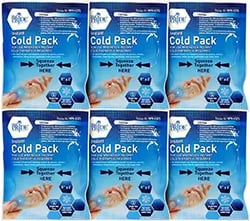 Use: For applying a cold compress to decrease swelling and inflammation after a bee or wasp sting, sprain and strain, bruising, or other minor injury.
Use: For applying a cold compress to decrease swelling and inflammation after a bee or wasp sting, sprain and strain, bruising, or other minor injury.
Cautions: (1) Don't let your pet chew on or eat these packs, as toxicity may occur.
(2) Don't apply the cold pack directly to your pet's skin, make sure there's fur or a towel between the pack and their skin to avoid cold-induced skin damage.
(3) Don't use cold packs to cool down an over-heated animal as this can constrict skin blood vessels and actually slow core cooling.
See this article to learn how to safely cool and treat a dog or cat suffering from heat exhaustion or heat stroke.
🚗 Travel First-Aid Kit: Include at least 1 pack
Use: To prevent a dog or cat in pain and distress from biting you or anyone else helping you while administering first aid. An animal in distress and pain are more likely to bite — even their owner, and even if they normally wouldn't.
A nylon cat muzzle, like the one below, is the easiest to apply and least distressful for a cat in pain. When shopping around, make sure to get the right size since there are usually several to choose from.
For dogs, basket-type muzzles, like the Baskerville muzzle, are often the easiest to apply and least distressful for a dog in pain, as they let the dog pant normally.
But basket muzzles aren't practical for every dog or every situation, so a cloth muzzle might be best for your dog.
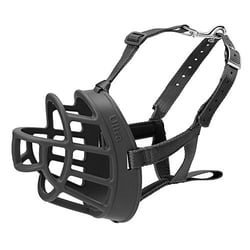
Pick from 6 available dog muzzle sizes — consult sizing chart
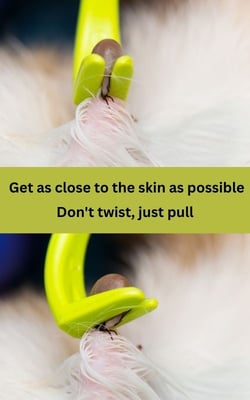 Use: For removing an embedded tick from your pet's skin. Take care not to crush the tick body when removing the tick and put the tick in a jar or other container after removal to bring to your vet for ID and see if any additional monitoring or treatment might be necessary.
Use: For removing an embedded tick from your pet's skin. Take care not to crush the tick body when removing the tick and put the tick in a jar or other container after removal to bring to your vet for ID and see if any additional monitoring or treatment might be necessary.
Ticks can carry and transmit: Lyme disease, Rocky Mountain Spotted Fever and other diseases.
We like the Tick Twister or the Ticked Off tools.
Alternatives: You can also use tweezers (these Uncle Bill's tweezers are perfect for a first-aid kit), or a locking, curved-tip hemostat.
🚗 Travel First-Aid Kit: Include
Head to our article to learn more about the steps to take to safely remove a tick from your pet (includes video).
Use: Syringes are used both for administering oral medications and also for cleaning and flushing wounds.
Use: To remove bee and wasp stingers! Tweezers are actually not the best way to remove a bee/wasp stinger, as they can squeeze the venom sack in the process and worsen the reaction and resulting pain.
To see how to use an old credit card (or driver's license), check out this video.
And check out this article to see what to do for a bee or wasp sting after you've removed the stinger!
🚗 Travel First-Aid Kit: Include
It's always good to have a reference close at hand when needing to administer first aid for your pet.
Recommended pet first-aid manuals:
The First Aid Companion for Dogs & Cats
American Red Cross: Dog First Aid
Emergency numbers
Include: Your vet, animal poison control, and your local animal emergency hospital
A pillowcase makes for a great and quick "makeshift cat carrier" in a pinch.
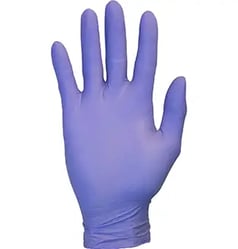
Use: Exam gloves don't just keep your hands from getting blood and other "stuff" on them, they also protect your cat's wound from becoming contaminated by bacteria from your hands.
We all have bacteria on our hands and it's not always possible or practical to wash them before administering first aid.
And some of us even have nasty, antibiotic-resistant bacteria on our hands without even knowing it! Gloves help prevent infections.
We recommend these nitrile (latex-free) gloves.
🚗 Travel First-Aid Kit: Include 1–2 pairs
We like these great "Mini" Maglites, or these (even more convenient) camping headlamps from GearLight.
Use: A reliable light source is imperative for when injuries happen at night, as well as for looking closely in between toes and paw pads, or into mouths, ears, or nostrils.
Caution: If you need to look into your pet's eye(s), don't use a bright light such as the Maglites or headlamps. Rather, use a less-bright medical "penlight," such as these LED nurse's penlights from CAVN.
Maglite Mini PRO LED 2-Cell AA Flashlight with Holster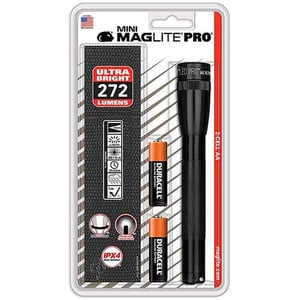
GearLight LED Headlights
Allows you to see and be hands-free
CAVN Pen Light with Pupil Gauge
Use this light (but not the others) for looking directly into a cat's eyes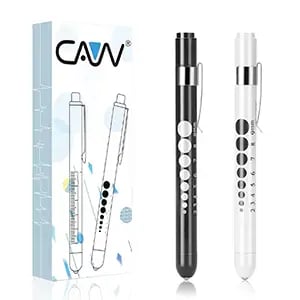
Use: Not just for providing your pet with water when they are thirsty — these collapsible bowls can also be used to mix a disinfectant (like chlorhexidine or povidone iodine, see above in Wound Care & Bandages section) and water to clean a wound.
If you use the bowl for diluting a disinfectant solution, just make sure not to use the bowl for drinking water afterwards, until its been cleaned properly.
🚗 Travel First-Aid Kit: Include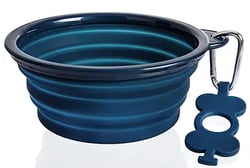
100% BPA free, FDA approved, Dishwasher safe
Use: You need somewhere to store all of your pet's first-aid supplies! A large tool or fishing tackle box is great for this purpose. Of course, you should also have a first-aid kit for any hiking, fieldwork, or any travel you do with your furry family members.
A large toolbox isn't practical for that, and you don't need all of the gear listed here for your travel first-aid kit.
You can put together a pared-down version by including just the items listed above indicated by this icon 🚗, or you can purchase a pre-made travel first-aid kit for pets like this one.
Rhino Rescue Pet First Aid Kit
If you already have a first-aid kit, when was the last time you checked and updated it? Have your stocks run low? Are the medications expired? Does it truly have everything you might need? (Many pre-made pet first-aid kits don't!).
To ensure you're fully prepared, make it a semi-regular practice to examine your kit(s) to replace anything expired or missing.
Fortunately, most of the items on this list are also useful for your own human first-aid kits, as well as for general healthcare around your home.
We know that putting together a complete kit gets to be expensive. To lower costs, especially since some of these products only come in bulk, you can save money by coordinating with your pet-owning neighbors, friends, and family to build multiple pet first-aid kits and share the expense.
Along with your first-aid supplies, we would highly encourage you to sign up for a pet first-aid class. Having that knowledge and hands-on experience will give you confidence in moments of stress when time is of the essence.

Hopefully, you’ll never need to use your first-aid kit, but it truly is better to be over-prepared than under. Stay safe!
